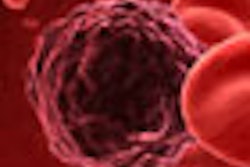Researchers at the University of Helsinki in Finland have described a new, recessively inherited human syndrome featuring craniosynostosis, maxillary hyperplasia, delayed tooth eruption, and extra teeth (American Journal of Human Genetics, July 7, 2011).
The researchers also identified causative mutations in the gene for interleukin 11 receptor alpha (IL11RA).
In craniosynostosis, the sutures between skull bones become ossified prematurely, affecting skull shape and limiting space for the growth of the brain. It is observed in 1 in 2,500 people and often requires operative surgery. Supernumerary teeth are more common, and in most cases they also require dental surgery.
A combination of these anomalies was observed in four children of a Pakistani family living in Denmark. Extra teeth developed in positions suggesting that they may represent a third set of teeth, the formation of which is normally prevented in humans.
The parents of the family were first cousins, which made it possible to localize the gene in the genome (so-called homozygosity mapping) and identify the mutation, causing a change of a single amino acid, in IL11RA. This is a protein on the cell surface that binds the extracellular interleukin 11 and makes it possible for the cells to sense the presence of this factor. When tested in cultured cell lines, the mutation inactivated the function of the receptor.
The researchers also found four other mutations in IL11RA in patients from Pakistan, England, and the Netherlands.
"This is a quite novel discovery as IL11 -- or the signaling pathway it belongs to -- has not previously been associated with any inherited human disorders," said lead study author Pekka Nieminen, MD. "The results show that IL11 signaling is essential for the normal development of craniofacial bones and teeth, and that its function is to restrict suture fusion and tooth number."
The researchers believe that IL11 normally mediates the complex tissue interactions that regulate replacement tooth development in mammals. In the skull, IL11 signals are probably needed to regulate a process called bone remodeling in the edges of the skull bones, including site-specific regulation of bone apposition and bone resorption.
"Eruption of permanent teeth was also delayed in the patients with IL11RA mutations, and it may well be explained by defects in bone resorption that is necessary for teeth to erupt," Dr. Nieminen said.



















